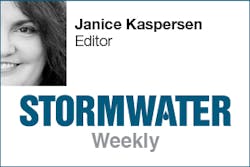
The Chemical Heritage Foundation in Philadelphia recently acquired a handwritten manuscript penned by Isaac Newton roughly 400 years ago. It’s the physicist’s copy of an earlier document written by an alchemist, George Starkey, and it contains directions for creating “sophick mercury,” an ingredient of the mythical philosopher’s stone, which alchemists believed could be used to turn base metals like lead into noble metals like gold. In addition to developing calculus, formulating the laws of motion and gravitation, and basically setting forth the principles of modern physics, Newton apparently devoted a great deal of time to the study of alchemy and took copious notes on the subject. It wasn’t until around the time of his death in 1726 that alchemy began to give way to modern chemistry.
Despite its reputation today—relegated to the same pseudoscientific realm as astrology or phrenology—alchemy was for many centuries a serious pursuit, and its practitioners contributed much to metallurgy and industries like leather tanning and creating inks, dyes, and paints.
And what does this have to do with stormwater? It’s an imperfect analogy, but what if we try to do the same—turning base materials into, if not quite gold, something almost as valuable? We have a chance to take something most people perceive as worthless—stormwater runoff—and turn it into usable water.
The magic ingredient—the sophick mercury—in this case (and yes, I’m aware that in this context mercury doesn’t have a good ring to it) isn’t really an ingredient at all, but more like the storage vessel. The size of that vessel and its connections to where the water is needed—from irrigated landscapes to industrial cooling systems to toilets to, perhaps, even potable water supplies—is the question some cities and private industries are grappling with.
The stormwater industry, and the regulations in many states and at the federal level, have embraced green infrastructure over the last several years. When Stormwater magazine launched in 2000, green infrastructure (or low-impact development, as it was more commonly called then) was a small part of the overall discussion. Today, retaining a certain percentage or volume of water onsite is mandatory in many places. We know the benefits—it reduces peak flows and lessens the burden on the central stormwater infrastructure or the sanitary sewer system; it can be used for onsite irrigation if there is a collection system in place; and to some extent it helps recharge groundwater supplies, which may be a source of drinking water. And yet, the emphasis in almost every case is primarily on getting rid of, rather than using, the runoff.
Some cities now provide free rain barrels for homeowners and businesses to collect water to be used onsite. What if we started moving back to centralized, offsite systems in certain areas—not for the purpose of moving runoff to the nearest river or stream, and not to send it to a wastewater treatment plant, but rather to collect it for beneficial use? On how large a scale could we, or should we, attempt to do it? Depending on the intended use, various degrees of filtration would be needed to remove debris and pollutants. In some states, water rights would come into play for large-scale collection of stormwater. (They can affect even lot-level collection like rain barrels in some cases.) How can we accurately compare the costs and benefits of small- and large-scale collection systems?
We’ve published a few articles on the topic, like this guest editorial, this two-part article on rainwater harvesting, and even an article showing that some climates are less suited than others for capturing and using rainwater. Our sister publication Water Efficiency deals with the issue from a slightly different perspective. Join in the comments here or at Water Efficiency’s website and let us know what you think.
Master Class Series From Forester University
There is still time to register and earn PDH or CEU credits for this popular series:
April 20 – May 26
Sediment & Erosion Control for Construction Sites Master Class Series
Join industry experts Jerald Fifield and Tina Evans for a comprehensive, six-part live and on-demand master class and workshop series exploring the ins and outs of effective sediment and erosion control plan design and review for construction sites. Enjoy six online lectures and Q&A sessions and three interactive workshops presented by Fifield and Evans, delving into Fifield’s best-selling third edition of Designing and Reviewing Effective Sediment and Erosion Control Plans (included in your Master Class Series package).
Click here for more information and to register.
Click here for a full list of upcoming webinars and webcasts.
About the Author
Janice Kaspersen
Janice Kaspersen is the former editor of Erosion Control and Stormwater magazines.

